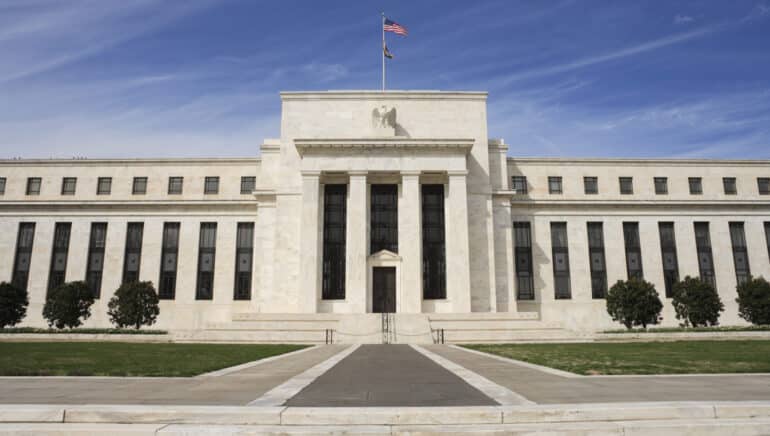The coronavirus also leaves its mark on financial market policy. The US Federal Reserve created facts on Tuesday: The Federal Reserve lowered its key interest rate by 0.50 percentage points to a new target range of 1.0 to 1.25 percent.
In contrast to other central banks, such as the European Central Bank (ECB), it had created a buffer for cuts with the gradual interest rate hikes in recent years.
Key interest rates Euroland and US

We spoke with Erste Asset Management economist Gerhard Winzer about the background to the US interest rate cut.
Did the Fed’s rate cut come as a surprise?
No. The market has reckoned with the fact that key interest rates will be lowered in principle. Already last Friday the central bank issued a statement that it would react appropriately to the economic risks posed by the coronavirus. Surprising was the extent, namely by half a percentage point and above all the timing. This is because the interest rate move took place between two regularly scheduled meetings of the Open Market Committee. The next meeting is scheduled for 18 March.
How do you interpret this step? Will other central banks join?
The rate cut by the ‘most important central bank in the world’ could be part of a concerted action by the central banks of the developed world. In the early morning hours of the very same day, the Australian central bank (RBA) had already cut its key-lending rate by 0.25 percentage points to 0.5 percent.
In countries where the interest rates are already very low such as in the Eurozone or Japan this loosening strategy does not necessarily have to include rate cuts. Monetary loosening can also be implemented via high liquidity provided to the banks (LTRO), expanded purchase programmes, or guidance of the market expectations (forward guidance).
By the way, the Canadian central bank joined the global concert of interest rate cuts and took a 0.5 percentage point interest rate cut on Wednesday.

Erste AM chief economist Winzer: The world economy will recover in the second half of 2020. The growth risks are considerable
What is the purpose of the interest rate cut?
Either way, the rate cut helps soften the tightening financial environment (decline in share prices, higher credit spreads, higher volatility). This is meant to contain a negative feedback loop of falling share prices and economic growth. Zudem verlautbaren immer mehr Länder, dass sie mit Hilfe der Steuerpolitik und Stützungen die Konkursgefahr bei Unternehmen eindämmen wollen. In addition, more and more countries are announcing that they want to use tax policy and subsidies to stem the risk of bankruptcy among companies. The US House of Representatives passed a law under which approximately 7 billion euros will be made available to cushion the effects of the virus on the economy.
Has the corona virus changed the outlook for Erste Asset Management?
A rapid recovery after the slump in growth in the first quarter is becoming increasingly unlikely. For China, a return to growth in Q2 is likely. However, two factors will dampen growth in the rest of the world: the disruption in the global value chain will continue to be felt in Q2. And measures to contain the virus outside China are increasing.
A recovery of the global economy is a long way off?
Erste Asset Management’s baseline scenario is a recovery of the global economy in the second half of 2020, with global GDP growth of 2.5 per cent in the fourth quarter of 2020 (quarter-on-quarter growth, projected to the year). However, the growth risks are considerable
On the topic of “Coronavirus and the consequences for the global economy” you can read further analyses on Erste AM Blog: https://blog.en.erste-am.com/coronavirus-the-economic-effects-of-epidemics-and-pandemics/
Legal note:
Prognoses are no reliable indicator for future performance.

